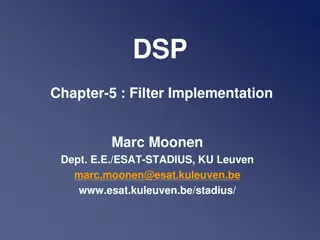
Understanding Statistical Quality Control for Process Improvement
Explore the characteristics of the N.D. curve, process capability studies, and the benefits of Statistical Quality Control in ensuring quality improvement, efficiency, and market competitiveness.
Download Presentation

Please find below an Image/Link to download the presentation.
The content on the website is provided AS IS for your information and personal use only. It may not be sold, licensed, or shared on other websites without obtaining consent from the author. If you encounter any issues during the download, it is possible that the publisher has removed the file from their server.
You are allowed to download the files provided on this website for personal or commercial use, subject to the condition that they are used lawfully. All files are the property of their respective owners.
The content on the website is provided AS IS for your information and personal use only. It may not be sold, licensed, or shared on other websites without obtaining consent from the author.
E N D
Presentation Transcript
Characteristics of N. D. Curve N.D. curve is bell shaped and symmetrical about the mean. The curve is fully defined by X-bar and N. D. curve extends from -3 to +3 . The limits with in curves are,
C505.7-Analyze the data and draw control charts to understand SQC.
1. In process capability study 2. The area under the curve between two limits represents the total % of production that will fall between these limits. When selection 0f 3 limits, we are 95.73% sure that the observations will lie within permissible limits. It helps to calculate the expected proportion of observation that will be less than or equal to specified value . _x It also help to calculate the expected proportion of observation that will be beyond the specified value of _ x
When statistical techniques are employed to control, iimprove and maintain quality or to solve the quality problems it is called Statistical Quality Control.(S.Q.C). Benefits of Stastical Quality Control ensures rapid and efficient inspection at minimum cost. It reuduces the scrap It uses acceptance sampling and more effective pressure for quality improvement. It provides ease for detection of faults. It helps production process to adhere to specification. Increses output and reudces the wasted machine and man hours. Efficient utilization of personnel, machines and materials resulting in higher productivity. Better customer relations through general improvement in product and higher share of market. 9. Elimination of bottlnecksin the process of manufacturing 1. 2. 3. 4. 5. 6. 7. 8.
Process capability is defined as the minimum spread of a specific measurment variation which will include 99.7% of the measurement of given process.
Point P: - Probability of acceptance is zero and 100% defective product. Point Q: - Probability of acceptance is 100% and zero defective product. A Q L: - Acceptable quality level, probability of acceptance is higher. IQL: - In difference quality level, probability of acceptance is 50%. LTPD: - lot tolerance percent defective, rejectable quality level. Producer risk:- due to sampling plan rejecting good lot. Consumer risk: - due to sampling plan accepting bad lot.






















